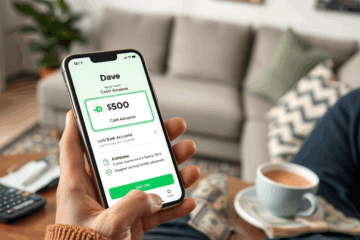Unlock Easy Money Through Real Estate Refinancing
Real Estate refinancing offers an exciting opportunity for homeowners to leverage the equity in their properties.
In this article, we will explore the ins and outs of cash-out refinancing, a strategy that enables homeowners to replace their existing mortgage with a larger one.
This approach not only provides access to liquid cash but also allows for investment in additional properties and projects.
We’ll delve into how tapping into your equity can help generate passive income, expand your real estate portfolio, and ultimately build sustainable wealth through smart refinancing techniques.
Real Estate Refinancing Made Simple
Real estate refinancing is a simple way to upgrade your home loan without selling your house.
In a nutshell, it means replacing your current mortgage with a new one that often comes with better terms.
This could mean a lower interest rate, a different loan length, or even turning some of your home’s built-up value into usable cash.
Many homeowners choose refinancing because it gives them more control over their finances and opens new opportunities to grow wealth.
Instead of applying for a new loan from scratch, you adjust the one you already have to better suit your current needs and market conditions.
Anyone who’s owned their property for some time may have equity that can be turned into cash through what’s called a cash-out refinance.
You can learn the basics of how refinancing works with this helpful guide from Bankrate’s mortgage refinancing overviewAmong all the reasons to refinance, the biggest advantage comes from tapping home equity.
Your property likely increased in value since you bought it, and refinancing lets you access that increase in cash form.
You can then invest that money into more real estate or even cover other life expenses.
Not to mention, if your new loan includes a lower interest rate, you could enjoy lower monthly payments and use your savings elsewhere.
This strategy helps transform static property value into a working financial tool, giving you more flexibility and freedom in your financial planning.
Ways Refinancing Puts Cash in Your Pocket
Refinancing your mortgage can be a key strategy for unlocking cash and improving your financial situation.
By securing a new loan with better terms or a lower interest rate, homeowners can reduce their monthly payments and free up extra cash flow.
Additionally, cash-out refinancing allows homeowners to tap into their home equity, providing them with funds that can be used for investments, renovations, or other expenses.
Cutting Interest for Lower Monthly Payments
Reducing your mortgage interest rate can generate immediate financial relief by cutting down your monthly payments, freeing up cash you can redirect toward savings, investments, or daily expenses.
By securing a refinance rate drop, even a modest 0.
5% reduction can lead to substantial monthly savings, especially on large loan balances.
For instance, refinancing a $300,000 loan from 6.
5% to 6% could lower payments by over $90 each month.
That extra cash isn’t just a buffer—it represents increased liquidity that can be leveraged for long-term value.
Tools like the Chase refinance savings calculator help visualize these benefits in real-time, showing how lower rates can strengthen your financial flexibility while reducing long-term interest obligations.
Pulling Equity with a Cash-Out Refinance
Homeowners often build up substantial equity as property values rise, and leveraging that equity becomes a smart move through a cash-out refinance.
This financial strategy replaces the existing mortgage with a new, larger loan, giving the homeowner immediate access to the difference in a lump sum.
For example, imagine your home is now worth $300,000, and your remaining mortgage is $200,000—after refinancing, you might walk away with $40,000 cash in hand to reinvest, perhaps into rental property or home upgrades.
The key is that you’re taking advantage of your home’s increased value while likely adjusting to a new interest rate.
According to Bankrate’s cash-out refinance resource, this tactic can unlock capital quickly while maintaining property ownership.
Choosing the Right Refinance Type
Understanding the key differences between cash-out, rate-and-term, and streamline refinance options empowers homeowners to strategically align their equity decisions with financial goals.
FHA refinance options such as streamline and cash-out cater to different borrower needs.
A cash-out refinance allows homeowners to convert home equity into liquid funds, offering fast access to capital for those with substantial home equity.
It works well for investing in other properties or handling large expenses but slightly raises your loan balance and may increase rates.
On the other hand, a rate-and-term refinance appeals to those seeking better loan conditions.
By adjusting the term or interest rate without taking extra cash, borrowers may significantly reduce monthly payments or shorten loan duration.
Streamline refinancing, especially under FHA loans, minimizes documentation and skips a new appraisal, easing the refinance process for qualified borrowers.
Ideal for those with existing FHA loans, it focuses on lowering the mortgage rate fast and with minimal cost.
Note that streamline refinances don’t allow significant cash-out—typically limited to $500.
Matching a refinancing method with one’s specific goals—whether it’s gaining cash, reducing bills, or speeding payoff—can help maximize real estate value
| Method | When to Consider | Main Benefit | Possible Drawback |
|---|---|---|---|
| Cash-Out | Big equity, need lump sum | Immediate cash | Higher balance |
| Rate-and-Term | Lower rate or change in term | Better payment structure | Closing costs apply |
| Streamline | FHA loan, quick savings | Fast and easy approval | Very limited cash out |
Use this overview to align your refinancing choice with what truly supports your long-term strategy
Success Stories of Quick Cash Wins
Jessica and Mark, a growing family from Oregon, were eager to upgrade their starter home without sacrificing financial security.
After speaking with a local mortgage advisor, they refinanced and secured a lower interest rate, slashing their monthly payment by $250.
With this newfound cash flow, they created an emergency fund and enrolled their daughter in enrichment programs.
As reported by CNBC’s home refinancing guide, these types of adjustments can significantly ease household budgeting
and open doors to long-term financial stability.
Meanwhile, Eric, a single homeowner in Austin, turned his home’s growing equity into opportunity.
Through a smart cash-out refinance, he obtained a $30,000 lump sum without increasing his monthly payments.
Eric used the funds to renovate his kitchen and invest in a small rental property.
His decision paid off as the rental now offsets his monthly mortgage, creating a passive income stream while enhancing property value
that continues to climb in a hot market.
Risks Every Homeowner Should Weigh
Refinancing offers homeowners the chance to access equity and lower monthly payments, but it also carries serious risks when not approached carefully.
One of the most overlooked dangers is the temptation to extend your loan term in pursuit of short-term relief.
While reducing monthly payments may feel like improved financial health, it often leads to higher overall interest costs over the life of the loan.
This extended timeline means you stay in debt longer, potentially paying tens of thousands more, even if the interest rate drops slightly.
That trade-off between immediate affordability and long-term financial burden demands deep scrutiny.
Another critical risk is increasing your total loan balance through a cash-out refinance.
Tapping into your home’s equity may seem like a strategic move to invest or cover expenses, but inflating your debt makes future refinancing far more difficult if market conditions shift.
According to guidance from the Office of the Comptroller of the Currency, borrowers face significant uncertainty when trying to replace existing debt in volatile interest environments.
Adding more to your debt exposes you to being locked into inflexible repayment terms.
That’s why homeowners must weigh these decisions against long-term affordability, not just short-term gain.
First Steps Toward Your Refinance
Ready to take control of your mortgage and unlock new financial possibilities? Refinancing your home doesn’t have to be complex when you begin with a focused step-by-step approach that leads you confidently toward closing.
- Review your current loan statement, paying close attention to your balance, interest rate, and loan term so you clearly identify your refinance goals
- Check your credit score to ensure it reflects good financial standing, as lenders use it to determine your eligibility and rates
- Estimate your home’s equity using recent sales and home value tools—this affects how much cash you can access through a cash-out refinance option
- Research mortgage refinance options by comparing lenders, interest rates, costs, and terms to choose the best fit for your goals
- Apply and begin the refinancing process by submitting required documents and preparing for your loan closing with your chosen lender
You now hold the keys to begin refinancing confidently—start today and take your first move toward greater financial freedom
Real Estate refinancing is a powerful tool for investors looking to enhance their financial growth.
By strategically leveraging equity, homeowners can unlock new possibilities for wealth creation and investment expansion.
Embrace the potential of smart refinancing to elevate your financial journey.



0 Comments